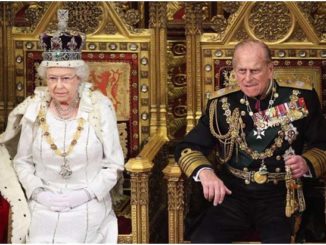
This year, the theme for International Women’s Day (March 8) is “Women in leadership: Achieving an equal future in a COVID-19 world”
Women of the world want and deserve an equal future free from stigma, stereotypes and violence; a future that’s sustainable, peaceful, with equal rights and opportunities for all. To get us there, the world needs women at every table where decisions are being made. This year, the theme for International Women’s Day (8 March), “Women in leadership: Achieving an equal future in a COVID-19 world,” celebrates the tremendous efforts by women and girls around the world in shaping a more equal future and recovery from the COVID-19 pandemic and highlights the gaps that remain. Women’s full and effective participation and leadership in of all areas of life drives progress for everyone. Yet, women are still underrepresented in public life and decision-making, as revealed in the UN Secretary-General’s recent report. Women are Heads of State or Government in 22 countries, and only 24.9 per cent of national parliamentarians are women. At the current rate of progress, gender equality among Heads of Government will take another 130 years.
Women are also at the forefront of the battle against COVID-19, as front-line and health sector workers, as scientists, doctors and caregivers, yet they get paid 11 per cent less globally than their male counterparts. An analysis of COVID-19 task teams from 87 countries found only 3.5 per cent of them had gender parity.
When women lead, we see positive results. Some of the most efficient and exemplary responses to the COVID-19 pandemic were led by women. And women, especially young women, are at the forefront of diverse and inclusive movements online and on the streets for social justice, climate change and equality in all parts of the world. Yet, women under 30 are less than 1 per cent of parliamentarians worldwide.
This is why, this year’s International Women’s Day is a rallying cry for Generation Equality, to act for an equal future for all. The Generation Equality Forum, the most important convening for gender equality investment and actions, kicks off in Mexico City from 29 – 31 March, and culminates in Paris in June 2021. It will draw leaders, visionaries, and activists from around the world, safely on a virtual platform, to push for transformative and lasting change for generations to come.
How did International Women’s Day start?
Controversy clouds the history of International Women’s Day. According to a common version of the holiday’s origins, it was established in 1907, to mark the 50th anniversary of a brutally repressed protest by New York City’s female garment and textile workers. But there’s a problem with that story: Neither the 1857 protest nor the 50th anniversary tribute may have actually taken place. In fact, research that emerged in the 1980s suggested that origin myth was invented in the 1950s, as part of a Cold War-era effort to separate International Women’s Day from its socialist roots.
The historian Temma Kaplan revisited the first official National Woman’s Day, held in New York City on February 28, 1909. (The organizers, members of the Socialist Party of America, wanted it to be on a Sunday so that working women could participate.) Thousands of people showed up to various events uniting the suffragist and socialist causes, whose goals had often been at odds. Labor organizer Leonora O’Reilly and others addressed the crowd at the main meeting in the Murray Hill Lyceum, at 34th Street and Third Avenue. In Brooklyn, writer Charlotte Perkins Gilman (of “The Yellow Wall-paper” fame) told the congregation of the Parkside Church: “It is true that a woman’s duty is centered in her home and motherhood…[but] home should mean the whole country, and not be confined to three or four rooms or a city or a state.”
The concept of a “woman’s day” caught on in Europe. On March 19, 1911 (the 40th anniversary of the Paris Commune, a radical socialist government that briefly ruled France in 1871), the first International Woman’s Day was held, drawing more than 1 million people to rallies worldwide. With the outbreak of World War I in 1914, most attempts at social reform ground to a halt, but women continued to march and demonstrate on International Woman’s Day.
Most dramatically, a massive demonstration led by Russian feminist Alexandra Kollontai that began on February 23, 1917 (according to Russia’s Gregorian calendar; it was March 8 in the West) proved to be a link in the chain of events that led to the abdication of Czar Nicholas II and the Russian Revolution. After the czar’s abdication, the provisional government formed until a constituent assembly could be elected became the first government of a major power to grant women the right to vote.
In recognition of its importance, Vladimir Lenin, founder of Russia’s Communist Party, declared Woman’s Day an official Soviet holiday in 1917. Communists in Spain and China later adopted the holiday as well. (Sometime after 1945, the terminology shifted, and “Woman’s Day” became “Women’s Day.”) Until the mid-1970s, International Women’s Day would be celebrated primarily in socialist countries.
In 1975, recognized as International Women’s Year, the United Nations General Assembly began celebrating March 8 as International Women’s Day. By 2014, it was celebrated in more than 100 countries, and had been made an official holiday in more than 25. Over the years, however, many celebrations of International Women’s Day strayed far from the holiday’s political roots. In Argentina, for example, it was largely commercialized, with men buying flowers and other gifts for the women in their lives. In China, despite the country’s long history with International Women’s Day, recent holiday events have focused on shopping and beauty events, such as fashion shows. Last year, in a somewhat bizarre tribute, a group of Chinese men climbed a mountain in dresses and high heels as an attempt to “experience the hardship” of being a woman.
Due to its ties with socialism and communism, perhaps it’s not surprising that International Women’s Day didn’t catch on here in the United States the way it did in other countries. Recently, however, international digital marketing campaigns have brought the holiday (in its less-political form) further into American culture, complete with corporate support from PepsiCo and other brands. Other groups are seeking to reclaim International Women’s Day and return it to its activist past, by continuing to demand recognition and rights for women and their work.





Be the first to comment